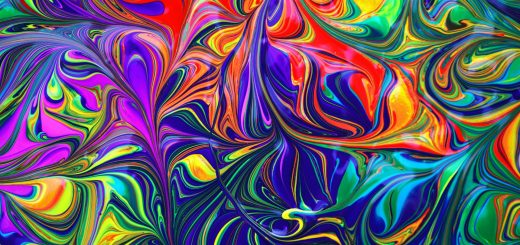The Ghost of Okiku in Noh and Bunraku Theater

Before diving in, please note: This post is for informational purposes only. If you’d like to know more about how we approach topics, feel free to check out our friendly Disclaimer Page.
Hey there, amazing readers! 🖐️ Just a quick note: yes, we know there are a lot of ads here. Trust us, we get it—it’s not the prettiest look, but they help us keep this blog alive and kicking. Those pesky little ads cover the costs of all the behind-the-scenes magic, from hosting and tech stuff to creating content we hope you’ll love.
We’re committed to delivering quality posts, and your support (even just sticking around despite the ads) means everything to us. So, bear with us, and thanks for helping us keep the good vibes rolling. Now, on to the fun stuff! 😉
TRANSLATE BUTTON AT THE END OF THE ARTICLE
Introduction to the Legend of Okiku
The legend of Okiku is one of Japan’s most enduring ghost stories.
It tells the tale of a young servant girl named Okiku, who worked in Himeji Castle during the Edo period.
The samurai lord of the castle, Aoyama Tessan, became infatuated with Okiku and tried to force her into a relationship.
When Okiku refused his advances, he accused her of stealing one of ten valuable family heirloom plates.
In a fit of rage, he threw Okiku down a well, where she died a tragic death.
Legend has it that her spirit remained on earth, counting the plates over and over again, unable to find peace.
The Influence of Okiku in Japanese Culture
The story of Okiku’s ghost has had a profound impact on Japanese culture, inspiring numerous adaptations in literature, theater, and film.
The enduring popularity of the Okiku legend can be attributed to its themes of betrayal, revenge, and the supernatural.
Okiku has become a symbol of female resilience and the consequences of unchecked power.
Her story resonates with audiences, not only in Japan but also around the world, as a cautionary tale about the dangers of lust and the consequences of one’s actions.
Noh Theater: Preserving the Spirit of Okiku
Noh theater is a traditional form of Japanese theater that dates back to the 14th century.
It is known for its minimalist aesthetics, slow and deliberate movements, and the use of masks.
Noh plays often draw inspiration from folklore, myths, and historical events, making them an ideal medium for retelling the story of Okiku.
Noh theater aims to preserve the spirit of the legend by capturing the essence of Okiku’s haunting presence through stylized movements and haunting melodies.
Exploring the Art of Noh Theater
Noh theater combines elements of dance, music, and drama to create a unique form of storytelling.
The actors, known as shite and waki, wear elaborate masks and costumes that represent their characters.
The movements in Noh are highly stylized and symbolic, with each gesture and step carefully choreographed to convey emotions and portray the characters’ inner thoughts.
The music in Noh is equally important, with flute and drum accompaniment setting the mood and enhancing the dramatic effect.
In a Noh adaptation of the Okiku legend, the ghostly presence of Okiku would be portrayed through the delicate movements of the shite, creating an eerie and ethereal atmosphere.
Okiku’s Haunting Presence in Bunraku Puppetry
Bunraku is a traditional form of Japanese puppet theater that originated in the 17th century.
Unlike Noh theater, which relies on live actors, Bunraku brings characters to life through intricately crafted puppets operated by puppeteers dressed in black.
The puppets used in Bunraku are highly detailed, with movable limbs, expressive faces, and the ability to convey a wide range of emotions.
The art of Bunraku allows for a visually stunning depiction of Okiku’s ghost, capturing the ethereal quality of her presence and the tragedy of her story.
An Overview of Bunraku Theater
Bunraku theater is a collaboration between three main performers: the puppeteer, the chanters, and the shamisen player.
The puppeteer manipulates the puppet on stage, while the chanters provide the voices and dialogue for the characters.
The shamisen player accompanies the performance with the traditional three-stringed instrument.
Together, these performers create a harmonious and immersive experience for the audience.
In a Bunraku adaptation of the Okiku legend, the puppeteer would bring Okiku’s ghostly form to life, while the chanters and shamisen player would provide the haunting vocals and music.
The Unique Characteristics of Bunraku Puppetry
Bunraku puppets are larger than life, standing about one meter tall, and are operated by three puppeteers.
The main puppeteer controls the head and right arm, while the other two puppeteers manipulate the left arm and legs respectively.
This coordinated effort allows for a greater range of movement and expression, making the puppets seem almost human-like on stage.
The puppeteers undergo years of rigorous training to master the art of Bunraku, learning to synchronize their movements and convey the emotions of the characters they portray.
In a Bunraku adaptation of the Okiku legend, the puppeteer would bring Okiku’s ghost to life, capturing the sorrow and anguish of her eternal torment.
Adapting the Tale of Okiku for Noh and Bunraku
Both Noh and Bunraku theater have presented their interpretations of the Okiku legend, each with its own unique perspective.
In Noh adaptations, the focus is often on the psychological turmoil of the characters and the exploration of their inner thoughts and emotions.
The slow and deliberate movements of the actors, accompanied by the haunting melodies, create a sense of tension and unease.
In Bunraku adaptations, the visual spectacle of the puppets takes center stage, with the puppeteer skillfully manipulating the puppet to convey Okiku’s anguish and longing.
Both forms of theater offer different but equally compelling interpretations of Okiku’s haunting presence.
Comparing Noh and Bunraku Depictions of Okiku
While Noh and Bunraku both aim to portray the haunting presence of Okiku, their artistic techniques and approaches differ.
In Noh, the focus is on the inner world of the characters, with the actors using subtle movements and expressions to convey their emotions.
The use of masks in Noh allows for a sense of anonymity, allowing the audience to project their own interpretations onto the characters.
In contrast, Bunraku relies on the visual impact of the puppets, with the puppeteer skillfully manipulating the puppet to convey Okiku’s ghostly presence.
The detailed craftsmanship of the puppets adds a layer of realism to the performance, making the audience feel a deeper connection to the tragic tale of Okiku.
The Ghost of Okiku: Symbolism and Meaning in Theater
The story of Okiku holds great symbolism and meaning within the context of Japanese theater.
Okiku’s ghost is often seen as a representation of the consequences of unchecked power and the dangers of desire.
Her presence serves as a reminder that actions have consequences and that vengeance can linger long after death.
In Noh and Bunraku adaptations, Okiku’s ghost becomes a powerful symbol of female resilience and the enduring spirit of those who have been wronged.
Her story resonates with audiences, highlighting the importance of empathy, justice, and the pursuit of peace.
The Enduring Legacy of Okiku in Japanese Theater
The legend of Okiku has left an indelible mark on Japanese theater, with numerous adaptations in Noh and Bunraku showcasing the timeless appeal of her haunting presence.
As one of Japan’s most iconic ghost stories, Okiku’s tale continues to captivate audiences with its themes of betrayal, revenge, and the supernatural.
Whether portrayed through the delicate movements of a Noh actor or the skillful manipulation of a Bunraku puppet, Okiku’s ghost serves as a powerful symbol of resilience and the consequences of one’s actions.
Her story reminds us of the enduring power of theater to explore complex emotions, convey timeless messages, and preserve the rich cultural heritage of Japan.

The Enlightenment Journey is a remarkable collection of writings authored by a distinguished group of experts in the fields of spirituality, new age, and esoteric knowledge.
This anthology features a diverse assembly of well-experienced authors who bring their profound insights and credible perspectives to the forefront.
Each contributor possesses a wealth of knowledge and wisdom, making them authorities in their respective domains.
Together, they offer readers a transformative journey into the realms of spiritual growth, self-discovery, and esoteric enlightenment.
The Enlightenment Journey is a testament to the collective expertise of these luminaries, providing readers with a rich tapestry of ideas and information to illuminate their spiritual path.
Our Diverse Expertise 🌟
While our primary focus is on spirituality and esotericism, we are equally passionate about exploring a wide range of other topics and niches 🌍📚. Our experienced team is dedicated to delivering high-quality, informative content across various subjects ✨.
To ensure we provide the most accurate and valuable insights, we collaborate with trusted experts in their respective domains 🧑🏫👩🏫. This allows us to offer well-rounded perspectives and knowledge to our readers.
Our blog originally focused on spirituality and metaphysics, but we’ve since expanded to cover a wide range of niches. Don’t worry—we continue to publish a lot of articles on spirituality! Frequently visit our blog to explore our diverse content and stay tuned for more insightful reads.







